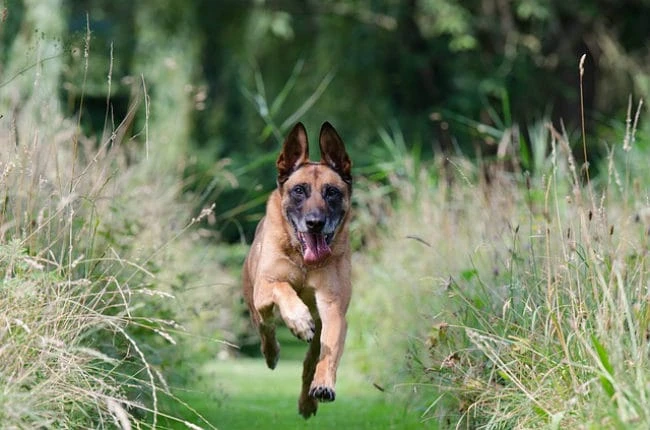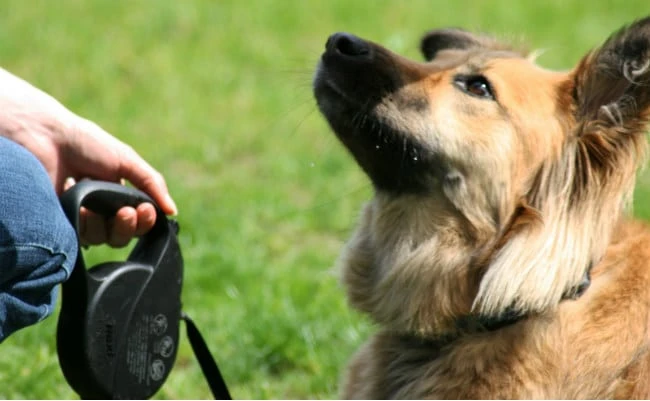How to Train Your Dog to Be Your Alarm Clock

Many people have trouble waking up when the alarm goes off. They’re busy during the day and sleep time sometimes feels like a waste, so they delay heading to bed. Then they may lay in bed for hours trying to fall asleep. When the alarm goes off, it yanks them out of deep sleep and they aren’t even fully conscious when they shut off the alarm and drop back into sleep. Then they’re late for important events or end up enlisting a spouse to pester them awake. If your dog sleeps near you, though, there’s still hope for a timely wake-up call!
Training Your Dog To Understand What The Alarm Clock Means
Most dogs sleep on a polyphasic schedule. This means they nap multiple times a day, without one long period of unbreakable deep sleep. They also have better hearing than humans and they very much like routines. Right now, your dog is probably used to hearing the alarm and expects you to go back to sleep. The alarm means nothing to a dog except a brief disruption in its own sleep. To create a furry alarm clock, you have to change that association.
Using A Clicker To Teach Your Dog About The Alarm
The first training session is much like the early work with Pavlov’s dog or creating a secondary reinforcement like charging a clicker. Sit in bed with a treat your dog really likes. Hit the button to make the alarm clock buzz and then give your dog its favorite treat. The most important part is the immediate delivery of the treat after the buzz. Do this 10 times in a row. A few hours later, press the buzzer when the dog is not expecting it but is awake and nearby. If your furry friend looks at you, expecting a treat, you’re ready for the next step. It could take a few tries before your dog makes the association between the sound of the alarm and the treats, but just keep doing short 5-minute training sessions a few times a day until the link sets in.
Conditioning Your Dog To React To The Alarm Clock
For the next step, bring your alarm clock to wherever you and your dog will be for an extended period of time, such as the living room on lazy days or long evenings at home. You should use the same alarm you use to wake up to keep the sound consistent. Set it so that it goes off at random intervals. Every time the alarm goes off, get excited! Give your dog some treats and then actively engage it for 5-10 minutes with something enjoyable, such as fetching, tug-o-war, or a walk. It should be really exciting every time the alarm goes off. You know you’re done with this step when your dog jumps eagerly to its feet when the alarm goes off, tail wagging and excited, ready for treats and playtime. Some dogs might get to this point in 3-5 repetitions while others may take 15 or 20, but all dogs eventually reach this point provided they are offered something exciting and enjoyable.
Move The Alarm Into The Bedroom And Keep Conditioning
The third step is to take the alarm to the bedroom at times you are alert and repeat the process. Once again, offer treats and playtime when the alarm goes off. Give the treats right away and then race to the living room or outside to play. Remember that the goal is to get the dog full of energy and excitement each time. Your dog should eagerly look forward to the alarm going off. This step should only take a few repetitions until your dog is getting just as excited in the bedroom as he was wherever you first practiced.
Teach Your Dog To Keep Waking You Even If You Don’t Want To Get Up!
The final step to train a working alarm clock is to become less involved. Remember, you want your dog to eventually wake you from a sound sleep and pester you until you get out of bed. Next time, when the alarm goes off, wait for a few breaths. If you’ve done the foundation steps correctly, your dog should come to you, ready for treats and play. Your pet may bark, jump on you, or smack you with a paw to get your attention and get the play to start. Play when the dog initiates activity the first time after hearing the alarm, but ignore any rough attempts he makes during other times that are not associated with the alarm. Then gradually increase the amount of time the dog has to pester you to get you to play.
The next time your alarm goes off in the morning, your dog is not going to be want to take no for an answer. The alarm now means treats and playtime. Congratulations on successfully training your dog for an assistance task, waking you at the alarm!




